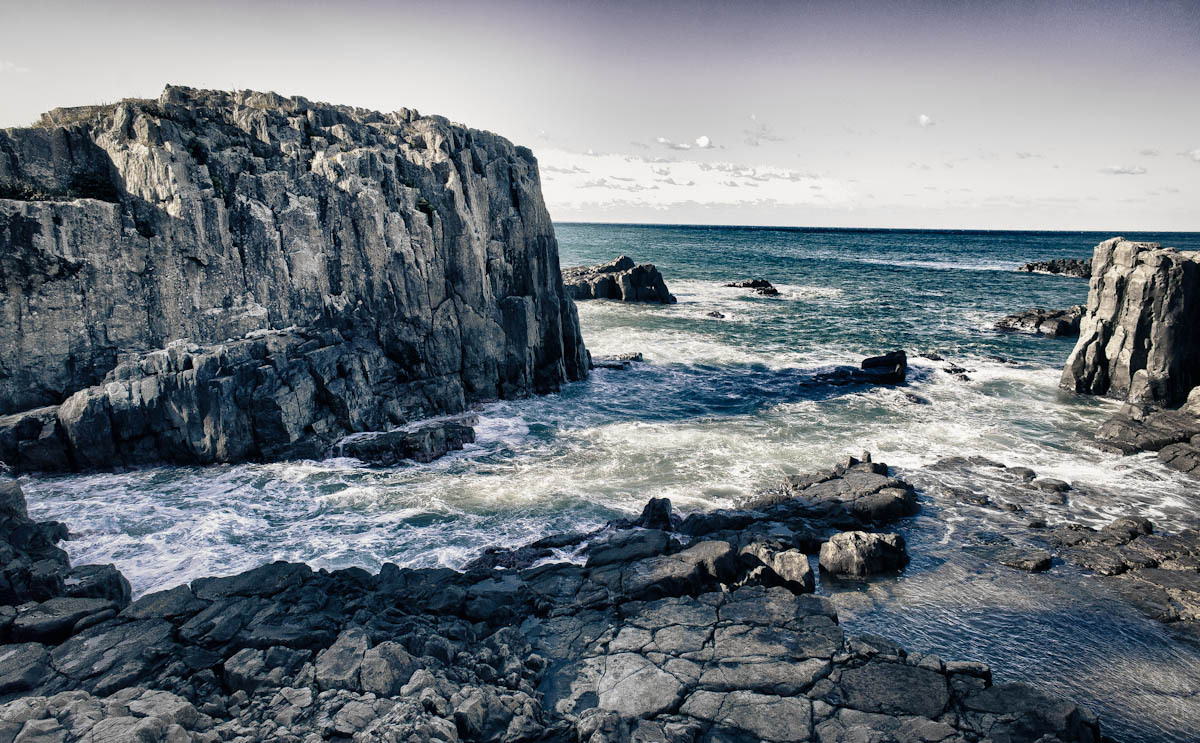Tōjinbō

Tōjinbō │ NEX-C3 & SEL 16mm F2.8 │ 16mm, ISO 200, f/11, ±0.3EV Autobracket HDR Last week, I went on a fieldwork assignment to a relatively remote area in central Japan. After 2 hours of bullet train and 2 hours of local-express trains, I reached the location for our hire car. After 90 minutes drive, we made it to the site. We travelled on the Wednesday, aptly 水曜日 in Japanese, which literally means water-day. Aptly named, because the heavens were open the entire day and night. So ferocious was the rain, that we couldn’t do any of the required outside work and left that until the following morning.
Thursday was a long and hard day of work, but went well. On Friday we were scheduled to return back to Tokyo, but had a few hours to kill. We headed for the coast, to see Tōjinbō. The cliffs’ rocks were originally formed 12- to 13-million years ago during the Miocene Epoch due to various volcanic activities. Their shape has been formed through the years by erosion from sea waves, leaving the hardened magma behind.
We arrived at around 8:30am, and the entire area was completely empty. When we left an hour later, coaches had arrived carrying schoolchildren, Chinese tourists and the very elderly Japanese. As with any natural environment, it’s better without the people.